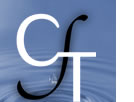 |
||||||||||
One-on-One Teaching & Independent Studies
Faculty Discuss One-to-One Work with Students: In this issue four members of the Vanderbilt faculty discuss their experiences with one-to-one teaching at Vanderbilt. Michael Aurbach is Associate Professor of Fine Arts and works with students one-to-one in sculpture courses. Catherine Fuchs is Associate Professor of Psychiatry and, as Training Director of Child and Adolescent Psychiatry, supervises both residents and post-doctoral fellows. Ellen Fanning is Stevenson Professor of Molecular Biology and Chair of the Department of Molecular Biology. She trains both graduate and undergraduate student researchers and holds lectures and seminar courses. Michael Kurek is Associate Professor of Composition and Chair of the Department of Composition/Theory. For over ten years, he has taught individual composition courses to students at the Blair School of Music.
Student Views on One-to-One Learning: From independent study to music lessons, Vanderbilt offers students a wide variety of opportunities to get involved with faculty on an individual basic. In the following article three students discuss the ins and outs of one-on-one learning and the way it has challenged them in their studies. Brian Chow is a senior in the School of Engineering. He is currently working on an independent research project in Biomedical engineering. Brian is the president of the Engineering Council. Meg Grow is a junior on both the Blair School of Music and the School of Engineering. She has worked on an individual basis with her professor to complete a minor in the French Horn. Samir Parikh is a fourth year student at the Vanderbilt School of Medicine, specializing in internal medicine.
Library Resources
All of the following reviews address books, articles, and book chapters that engage some aspect of one-to-one teaching, and are available at Vanderbilt.
Teaching Through Academic Advising: A Faculty Perspective . New Directions for Teaching and Learning, Alice G. Rienarz, Eric R. White, eds. Jossy-Bass Publishers, Summer 1995.
This volume in the New Directions for Teaching and Learning Series offers faculty writings on academic advising as a form of teaching. The issue examines several facets of advising including the university's role in supporting advising as an educational tool, faculty advisors as mentors, the relationship between advising and student assessment, and suggestions for faculty who want to improve their mastery of advising. Advising in specific academic areas such as humanities, sciences, and social sciences are included. Also, the volume includes a discussion of the unique advising needs of specialized student groups such as honor students, first year students, and members of ethnic or cultural minorities.
The following articles on one-to-one teaching are also available at the Center for teaching:
-
Student Faculty Research :
- "Students as Partner" by Barbara Noel Dowds. In Partnerships in Research, Clinical, and Educational Settings. Roger Bibace, James J. Dillon, Barbara Hoel Dowds, eds. 1999. Ablex: Stamford CT p. 135-146
- "Undergraduate Research Groups: Two Models" by Pamela Gibson, Arnold Kahn and Virginia Mathie in Teaching of Psychology v. 23 Feb 196 pp. 36-8.
Student's Perspectives on One-to-one Teaching :
- "The one-to-one survey: traditional versus non-traditional student satisfaction with professors during one-to-one contacts" by Gary Rosenthal, Earl Folse, and Nancy Allerman in College Student Journal v. 24 no. 2 June 2000. p. 315-320.
- "Undergraduates Talk about their College Experience" in Liberal Education v. 84 no 3, Summer 1998. pp 26-29.
The following books are available at the Peabody Library :
- Between Talk and Teaching: Reconsidering the Writer's Conference by Laurel Black. Utah State University Press, 1998. (Call. No.: EDUC PE 1404.B587 1988)
- Teaching One-to-One: The Writing Conference by Muriel Harris. National Conference of Teachers of English, 1986, (Call No. EDUC PE 1404.H37 1986)
These two volumes examine the most common forms of one-to-one teaching, the writing conference, from opposite poles. Black, as assistant professor at Indiana University of Pennsylvania, uses library analysis techniques to explore the inner dimensions of the writing conference. Using hundreds of tape recorded writing conferences, Black has produced a book exploring power dynamics between students and teachers and the role of those dynamics in impeding useful communication between teachers and students. She gives particular attention to the impact of race and gender on the one-to-one teaching dynamic.
Muriel Harris, the author of numerous works on grammar, usage, and composition instruction, takes a much more practical approach, offering a road map far a successful writing conference. She describes the rationale for the development of one-to-one conferencing as a teaching technique and outlines the role it plays in writing instruction. She also dissects the same kinds of student-teacher interactions that Black Does, but focuses more on the practical aspects of student-teacher interaction. The book includes several pages of examples and exercises designed for student teachers who are preparing to conduct their own writing conferences.
Although these two books focus primarily on the writing conference, what both Black and Harris have to say can apply to virtually any student-teacher interaction and thus can be useful to instructors in multiple disciplines.
HOME | ABOUT CFT | PROGRAMS | SERVICES | RESOURCES
Center for Teaching |
General Questions? Web Site Questions? Copyright ©2009 |
